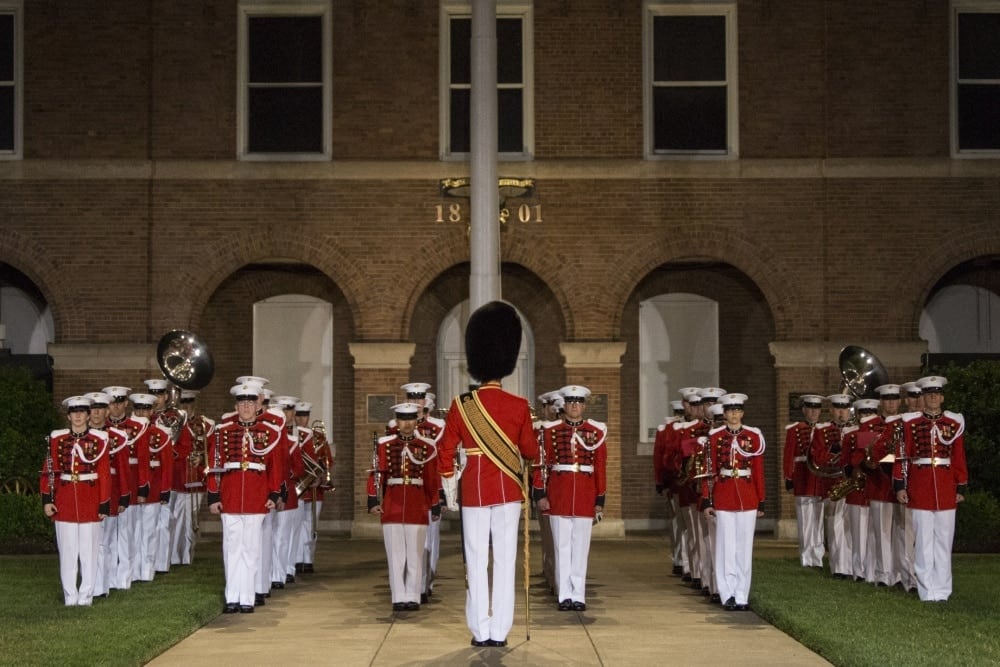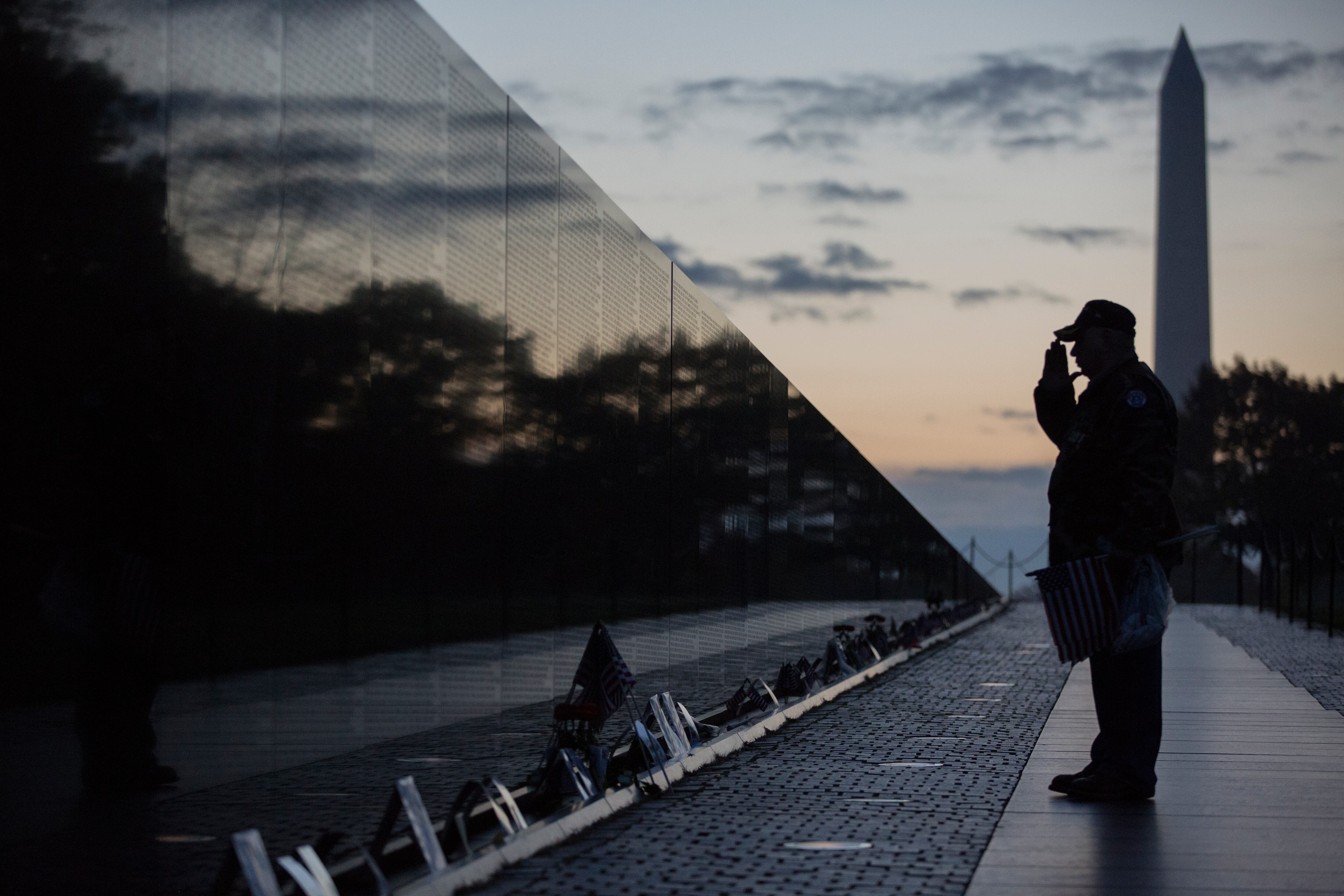A friendly reminder for D.C. tourists — you will miss something.
No matter how long or well-planned the trip, Washington's cultural and historical offerings are too vast to cover in a single getaway. As one Facebook commenter noted when we asked readers for their D.C. travel tips, "However long you think you need for your trip, add two days."
Rather than an exhaustive list of memorials, maps to the museums or guides to guided tours, here are a dozen smaller items to keep in mind whether you're in town for a day, planning a family vacation or settling in for a Pentagon assignment.
As always, a word about military discounts: Many hotels, attractions and restaurants in D.C. offer them, but always check before you arrive to see if the online price is still in effect, confirm eligibility rules and determine what identification you'll need to claim the deal. However, unlike other cities, most of the prime tourist attractions are free of charge, so discounts may not be a driver as you plan your stay.
1. Parade points. No "must-see" attraction stood out from the pack among readers who answered the call for D.C. feedback, but many directed visitors toward one of two Marine Corps institutions: evening musical performances at Marine Barracks Washington ("8th and I") and at the Marine Corps War Memorial, often known as the Iwo Jima Memorial.

Marines with the Marine Band perform during an evening parade at Marine Barracks Washington on May 5.
Photo Credit: Lance Cpl. Hailey D. Clay/Marine Corps
You'll need to reserve a seat for the barracks performances, held Friday nights during the summer, although some unclaimed spots may go to those who wait in a general admission line on site. The memorial performances, held on Tuesdays, are open to the public, no advanced ticketing required.
Head here for more information on both weekly shows.
2. Traffic trouble. It's not just parades that may require some advance planning — the other common call from readers was a warning to visitors that moving around the city, especially by car, isn't for the faint of heart.
Some lamented typical rush-hour traffic. Others pointed out bizarre parking regulations that can do serious damage to a travel budget in the form of unexpected tickets. But most kept with a simple theme: Skip the cars as much as possible, plan your trip around mass transit, and get a good pair of walking shoes.
3. A morning zoo … One easy way to avoid crowds is picking off-peak visiting times. You may miss out on some portions of the attraction that open late or close early, but you'll more than make up for it by shortening your line significantly.
One example: Exhibit buildings at the Smithsonian's National Zoo open at 9 a.m., but the zoo grounds open an hour earlier. If you've only budgeted a bit of time for the animals, you may end up seeing more, and doing it with less company, if you head out early.
4. … and a nighttime tour. Similar to the zoo plan, multiple readers suggested a nighttime visit to the various memorials on the National Mall. It's a good way for single service members to schedule their sightseeing around daytime duties, and the lighting on some of the structures provides new perspective to those who've already done the traditional family visits.
Don't want to walk in the dark? Tour providers such as Trolley Tours offer nighttime outings.

An evening view of Vietnam Veterans Memorial.
Photo Credit: Military Times
5. Remember these memorials. Readers directed incoming tourists to the Korean War Veterans Memorial, southeast of the Lincoln Memorial, as an underappreciated tribute to what's sometimes called "The Forgotten War." National Park Service records show more than 4 million people visited the memorial in 2016, compared with just less than 5.3 million visitors to the Vietnam Veterans Memorial.
Another rarely seen tribute, despite its location on the National Mall: The D.C. War Memorial, which was dedicated in 1931. The structure, built to serve as both memorial and bandstand, includes the names of 499 D.C. service members who died during World War I.
Not up for the road less traveled? Keep in mind that the Washington Monument is closed until 2019, with repairs to its elevator underway.
6. Island getaway. More than one reader highlighted Theodore Roosevelt Island as a nearby escape from D.C. bustle. "As soon as you walk across the bridge, you can feel the crazy being left behind," one commenter explained.
In the Potomac River, near the Key Bridge, the island offers a variety of short trails, including a 1.5-mile Swamp Trail that takes visitors around its edge. It's free to visitors, but don't pack that bag just yet: The removal of diseased trees (Thanks, emerald ash borer) has the island shut down for about three weeks.
Get details on re-opening plans, as well as information on the multiple roads, trails and paths that lead to the island, at www.nps.gov/this.
7. Over the river. Making a return trip to D.C. after a long time away? The first new landmark you'll likely notice has nothing to do with history — it's the MGM National Harbor hotel and casino, which opened in December in Maryland, on the bank of the Potomac River.
The $1.4 billion, 308-room facility may dominate the view, but it's not the only thing going on in National Harbor. Restaurants, rides and other attractions, several with military-friendly discounts, dot the landscape for those looking for entertainment options outside city limits. Learn more here.
8. Membership has its privileges.
The Library of Congress ranks among the mainstays of D.C. historic sites, but for those whose interest in the library goes beyond a simple tour, some advance planning may be in order.
Visitors can apply for a Reader Identification Card in person, or pre-register for one online; you'll still have to finish the process on-site. Once armed with an RIC, visitors can access research areas and other portions of the library's 164-million-book inventory that aren't available to tour groups.
9. Aerial view. Not the type to spend your trip nose-deep in a book? Outdoor offerings abound in and near D.C., but multiple readers suggested a trip to Gravelly Point in Arlington, across the Potomac from Washington — for both sights and sounds.
It's just off the Mount Vernon Trail, which runs south to George Washington's famed residence, but it's the more modern appeal of jets buzzing just a few hundred feet overhead that has put the location on the map. Just off one of the runways at Ronald Reagan Washington International Airport, visitors can enjoy a park atmosphere occasionally interrupted by an up-close air show.

Gravelly Point offers a close look at local air traffic.
Photo Credit: Carolyn Kaster/AP
10. Tour reminder. Because so many of the city's attractions — memorials and museums, for instance — are designed for walk-up business, visitors may forget that certain sites are more restrictive.
If you're planning to tour the White House or see the Capitol, simply showing up on the morning of your visit might not do the trick. A safer way is to contact your representative; some even offer constituent-only tours in addition to tickets for the standard tours. Learn more, and get contact details, at www.visitthecapitol.gov.
11. Must-sea. If you've covered the Smithsonian's offerings, or if you're after a deeper dive into military history, the National Museum of the United States Navy, located at the Washington Navy Yard in Southeast D.C., offers about 5,000 artifacts, as well as guided tours of the yard itself.
Like the Smithsonian museums, admission is free. But be sure to bring your ID for easy base access. Get details here.
12. Outside the beltway. Speaking of sea-service museums, the National Museum of the Marine Corps sits a short drive south of the city (or long, if you head down during rush hour) in Quantico, Virginia. It's one of dozens of historic offerings in the surrounding area, many of which make up for travel time with lighter crowds.
More than a half-million visitors came to Manassas National Battlefield Park in 2016, for instance, compared with nearly 8 million at the Lincoln Memorial. And the National Air and Space Museum's Steven F. Udvar-Hazy Center in Chantilly, Virginia, which houses the space shuttle Discovery and an SR-71 Blackbird, among other oversized wonders, had 595,000 visitors the first five months of this year, according to the Smithsonian, while the D.C. air-and-space location hosted 2.8 million guests.
Kevin Lilley is the features editor of Military Times.





